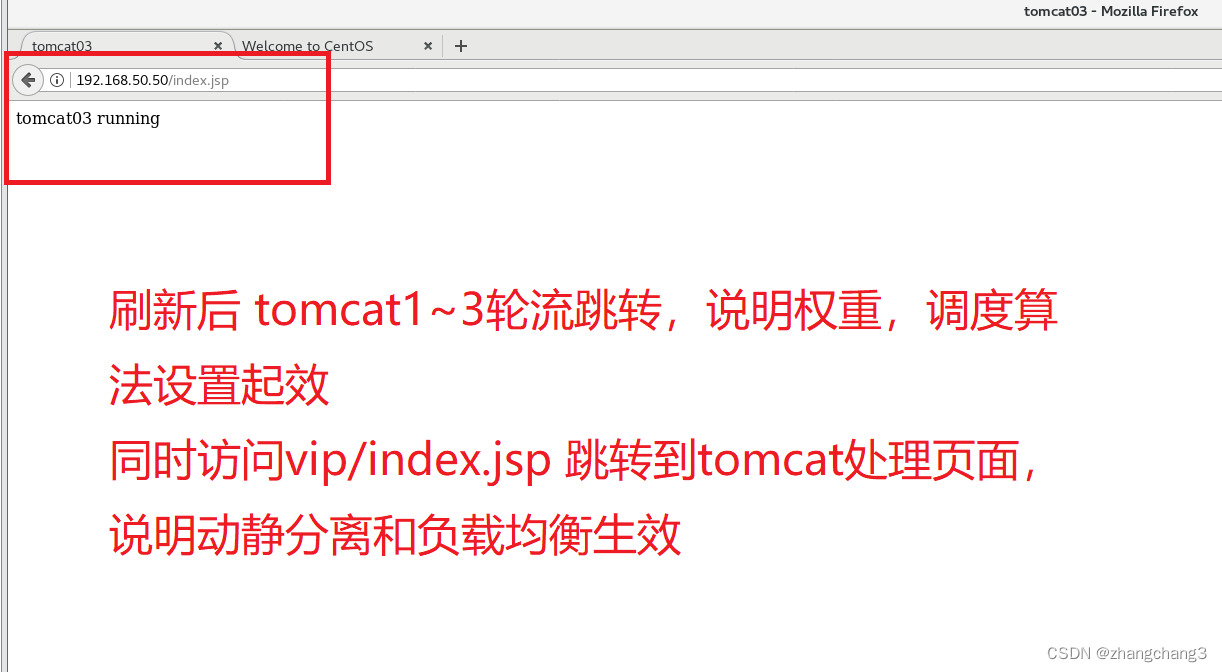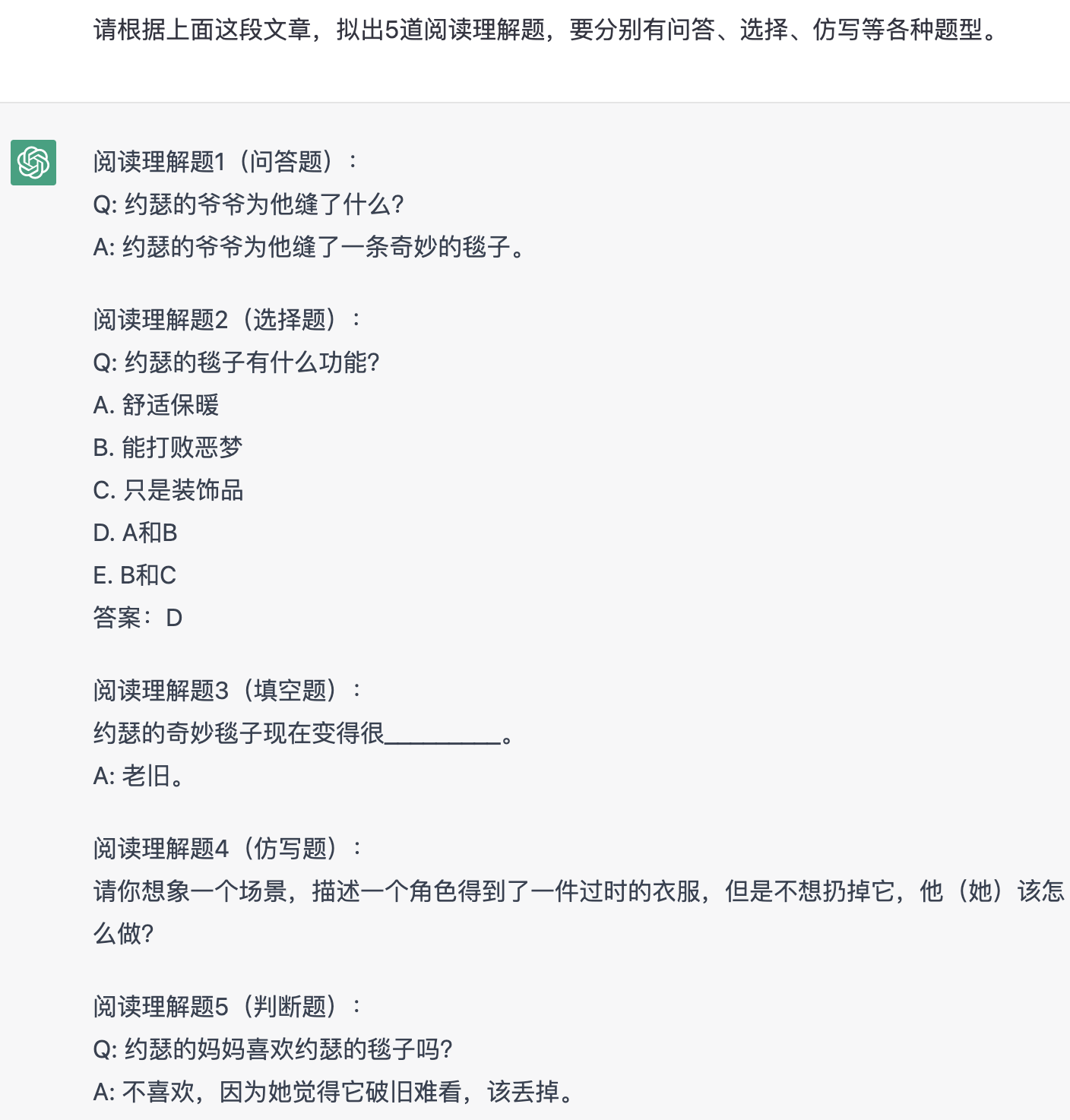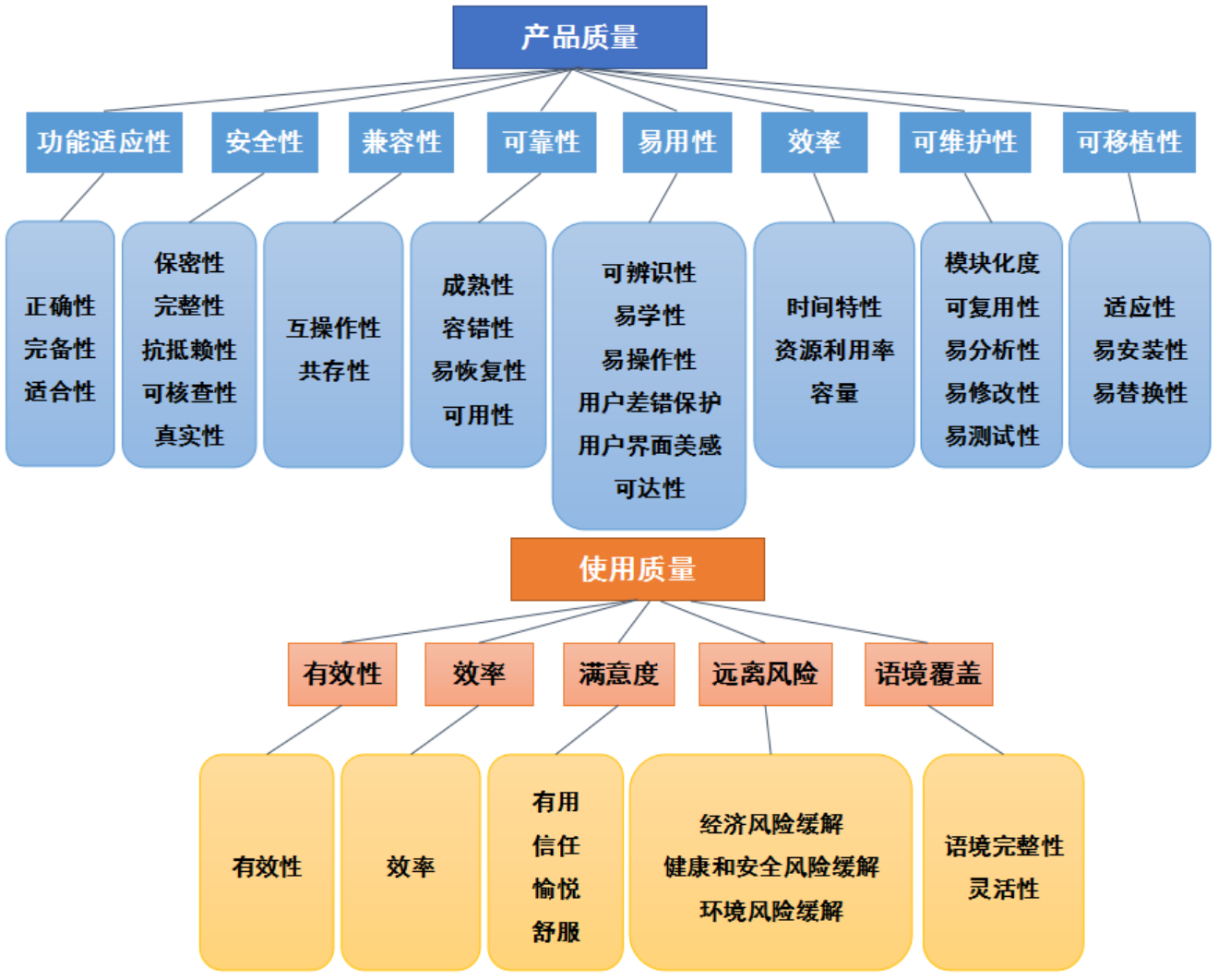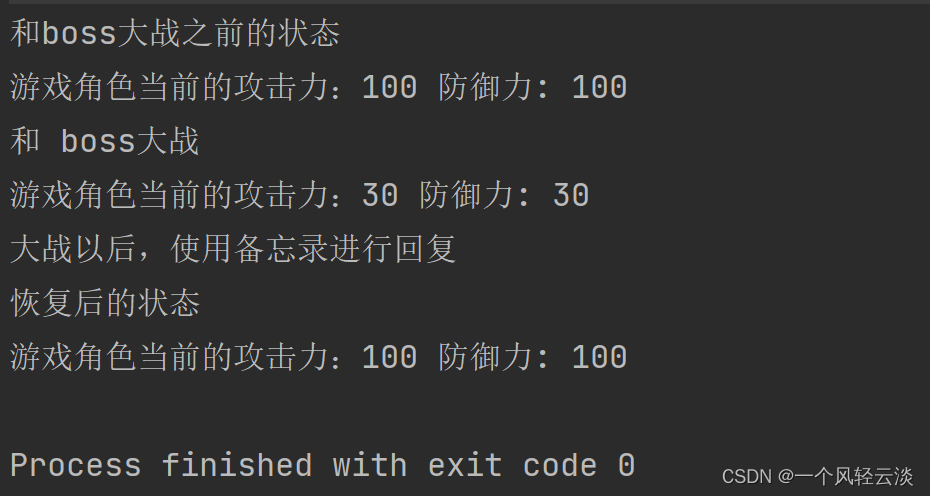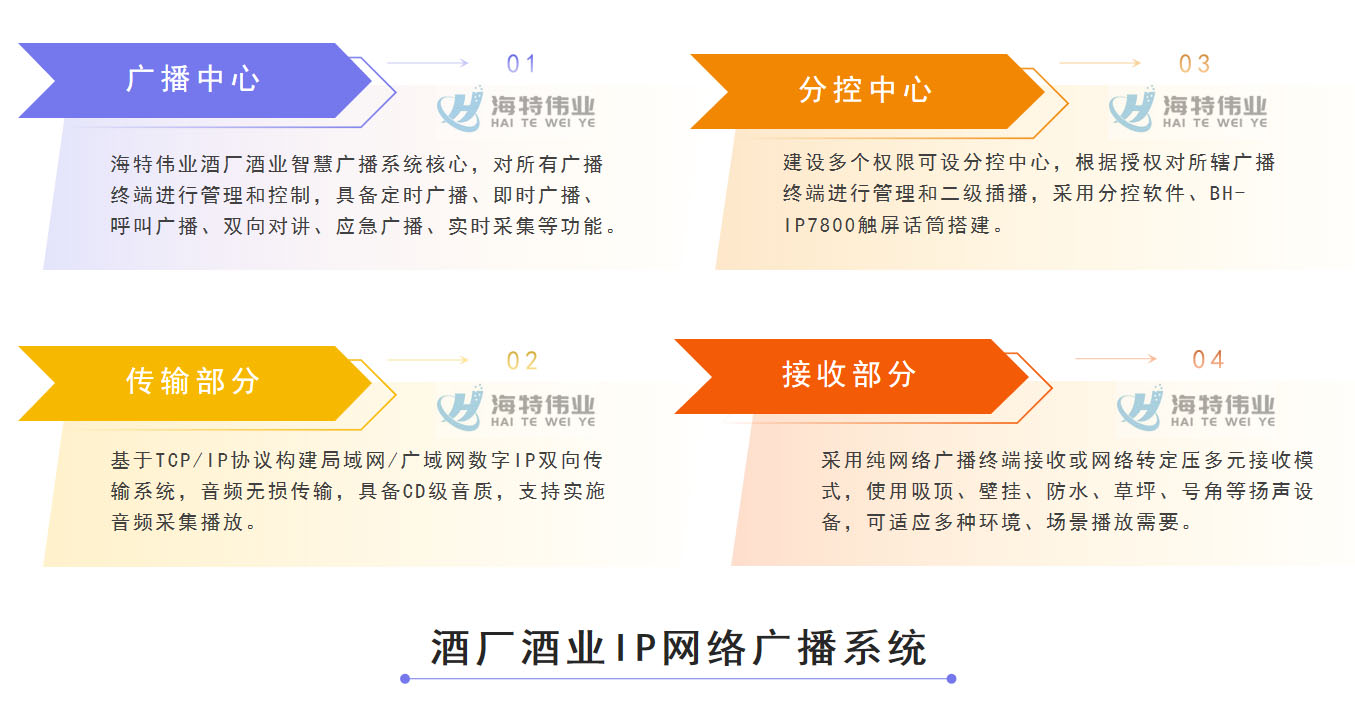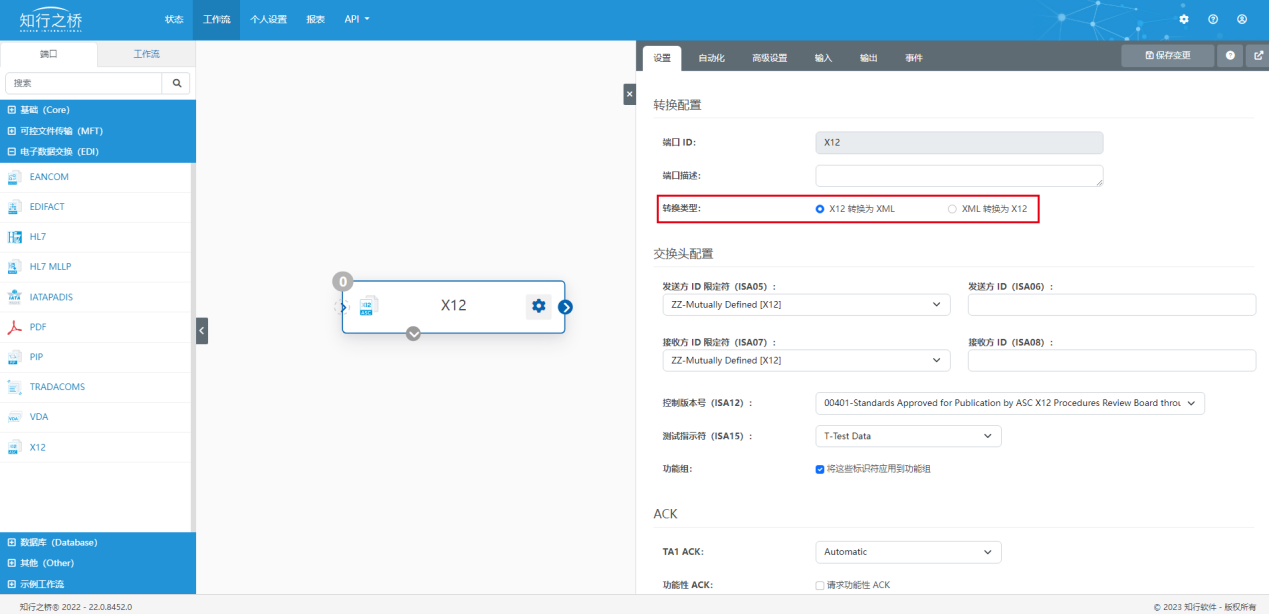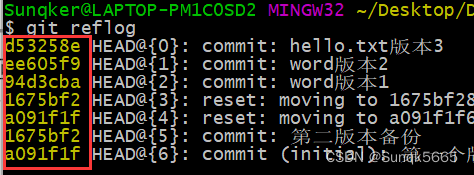北邮22信通一枚~
跟随课程进度每周更新数据结构与算法的代码和文章
持续关注作者 解锁更多邮苑信通专属代码~
获取更多文章 请访问专栏~
北邮22信通_青山如墨雨如画的博客-CSDN博客
目录
1.二叉树的前序遍历
1.1递归算法
1.2非递归算法
1.2.1模板类实现栈
1.2.2模板类实现栈的优化算法
1.2.3 STL栈
2.二叉树的中序遍历
2.1递归算法
2.2非递归算法
2.2.1模板类实现栈
2.2.2模板类实现栈的优化算法
2.2.3 STL栈
3.二叉树的后序遍历
3.1递归算法
3.2非递归算法
3.3说明
4.层序遍历
5.模板类实现栈完整代码
5.1代码部分
5.2运行结果
6.STL实现栈完整代码
6.1代码部分
6.2运行结果:
1.二叉树的前序遍历
1.1递归算法
template<class temp>
void bintree<temp>::preorder(binnode<temp>* r)
{
if (r != NULL)
{
cout << r->data;
preorder(r->leftchild);
preorder(r->rightchild);
}
}1.2非递归算法
1.2.1模板类实现栈
栈顶元素永远为当前元素的父节点,设r为当前访问的节点,则
1.若r!=NULL,访问r(cout<<s[top].r->data;)并入栈(s[++top].r=r;),调用r=r->leftchild;将r标记为1(s[top].tag=1;)返回1;
2.若r==NULL,重新设r为栈顶元素
2.1若r标记为2,说明右子树返回;r出栈,重新设r为栈顶元素(top--;),返回2.1;
2.2若r标记为1,说明左子树返回;调用r=r->rightchild;将r标记为2(s[top].tag=2;),返回1;
反复执行,直到栈空(top==-1),程序结束。
if(r!=NULL)
{
cout<<r->data;入栈
}
if(r==NULL)
1.不出栈,换右支
2.出栈
template<class temp>
void bintree<temp>::stackpreorder(binnode<temp>* r)
{
linkstack<temp> s[100];//栈
int top = -1;//栈顶指针
do
{
while (r != NULL)//入栈并访问,设置为左子树
{
s[++top].r = r;
s[top].tag = 1;
cout << s[top].r->data;
r = r->leftchild;
}
while ((top != -1) && s[top].tag == 2)//出栈
top--;
if ((top != -1) && (s[top].tag == 1))
{
//设置栈顶访问右子树
r = s[top].r->rightchild;
s[top].tag = 2;
}
} while (top != -1);
}1.2.2模板类实现栈的优化算法
当前节点,访问完其左子树之后,依靠当前结点找到右子树,之后当前节点不再提供信息,等待出栈;可以提前让当前结点出栈,简化递归过程。
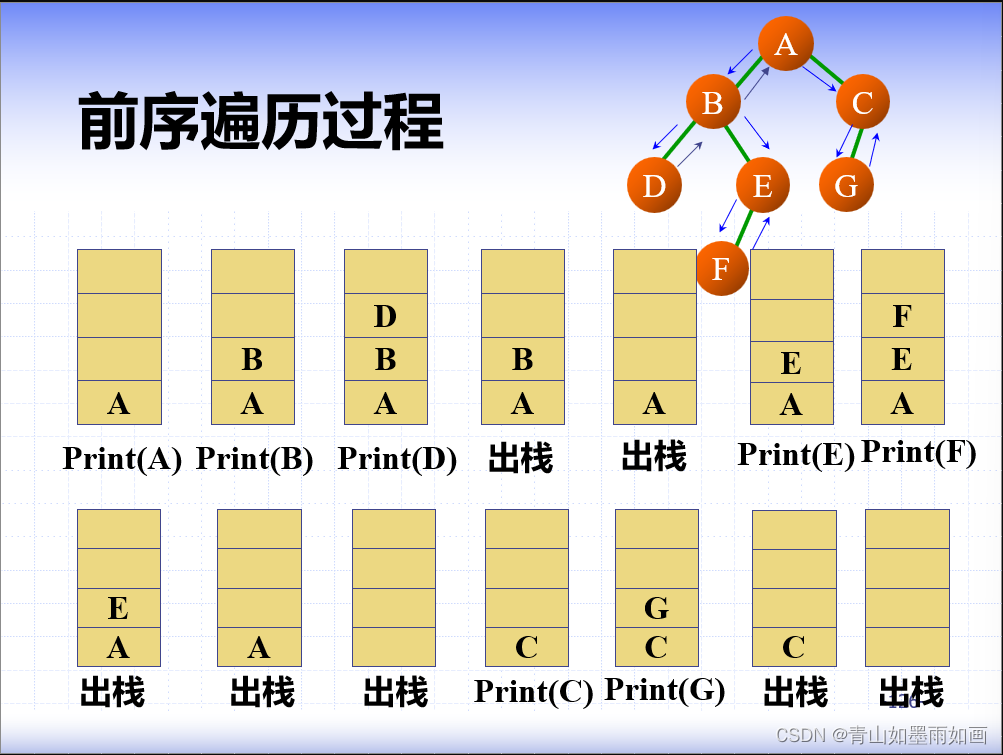
算法优化:
if(r!=NULL)
{
cout<<r->data;入栈
}
if(R==NULL)
出栈,换右支
template<class temp>
void bintree<temp>::quickstackpreorder(binnode<temp>* r)
{
linkstack<binnode<temp>*>s;
while (!s.empty() || (r != NULL))
{
if (r != NULL)
{
cout << r->data;
s.push(r);
r = r->leftchild;
}
else
{
r = s.pop();
r = r->rightchild;
}
}
}1.2.3 STL栈
template<class temp>
void bintree<temp>::quickSTLpreorder(binnode<temp>* r)
{
stack<binnode<temp>*>s;
while (!s.empty() || (r != NULL))
{
if (r != NULL)
{
cout << r->data;
s.push(r);
r = r->leftchild;
}
else
{
r = s.top();
s.pop();
r = r->rightchild;
}
}
}2.二叉树的中序遍历
2.1递归算法
template<class temp>
void bintree<temp>::inorder(binnode<temp>* r)
{
if (r != NULL)
{
inorder(r->leftchild);
cout << r->data;
inorder(r->rightchild);
}
}2.2非递归算法
2.2.1模板类实现栈
栈顶元素永远为当前元素的父节点,设r为当前访问的节点,则
1.若r!=NULL,r入栈(s[++top].r=r;),调用r=r->leftchild;将r标记为1(s[top].tag=1;),返回1;
2.若r==NULL,重新设r为栈顶元素
2.1若r标记为2,说明右子树返回;r出栈,重新设r为栈顶元素(top--;),返回2.1;
2.2若r标记为1,说明左子树返回;调用r=r->rightchild;访问r(cout<<s[top].r->data;)并将r标记为2(s[top].tag=2;),返回1;
反复执行,直到栈空(top==-1),程序结束。
if(r!=NULL)
{
入栈;
}
if(r==NULL)
1:cout<<r->data;不出栈,换右支;
2:出栈
template<class temp>
void bintree<temp>::stackinorder(binnode<temp>* r)
{
linkstack<temp> s[100];
int top = -1;
do
{
while (r != NULL)
{
s[++top].r = r;
s[top].tag = 1;
r = r->leftchild;
}
while ((top != -1) && (s[top].tag == 2))
top--;
if ((top != -1) && (s[top].tag == 1))
{
r = s[top].r->rightchild;
cout << s[top].r->data;
s[top].tag = 2;
}
} while (top != -1);
}2.2.2模板类实现栈的优化算法
当前节点,访问完其左子树之后,依靠当前结点找到右子树,之后当前节点不再提供信息,等待出栈;可以提前让当前结点出栈,简化递归过程。
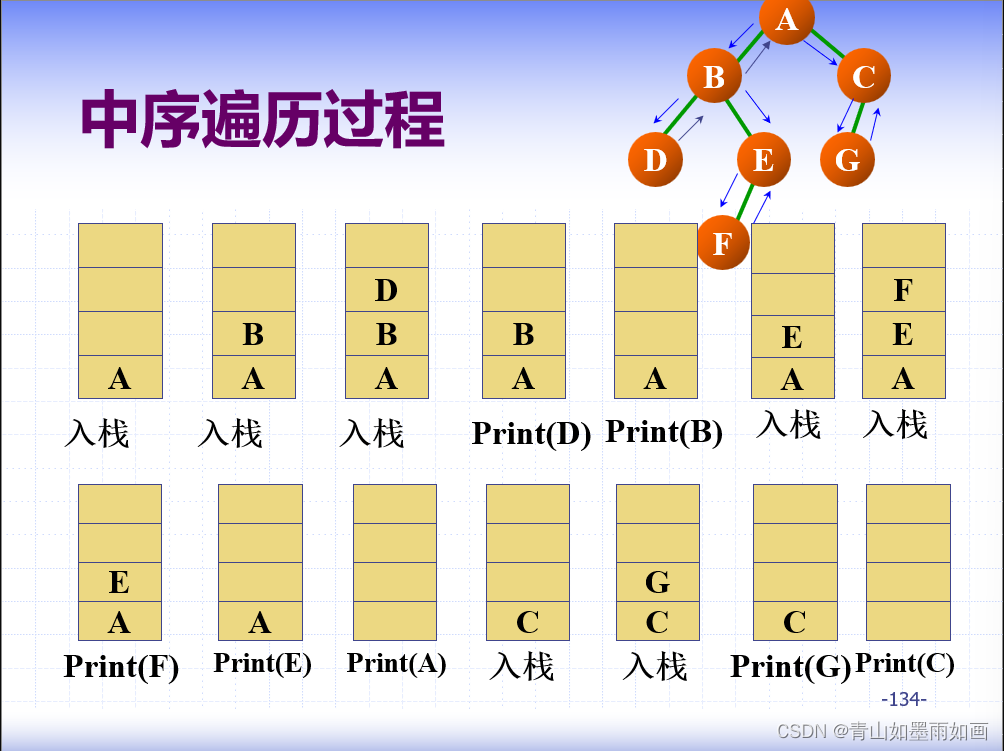
算法优化
if(r!=NULL)
{
入栈;
}
if(r==NULL)
{
cout<<r->data;
出栈,换右支;
}
template<class temp>
void bintree<temp>::quickstackinorder(binnode<temp>* r)
{
linkstack<binnode<temp>*>s;
while (!s.empty() || r != NULL)
{
if (r != NULL)
{
s.push(r);
r = r->leftchild;
}
else
{
r = s.pop();
cout << r->data;
r = r->rightchild;
}
}
}2.2.3 STL栈
template<class temp>
void bintree<temp>::quickSTLinorder(binnode<temp>* r)
{
stack<binnode<temp>*>s;
while (!s.empty() || (r != NULL))
{
if (r != NULL)
{
s.push(r);
r = r->leftchild;
}
else
{
r = s.top();
s.pop();
cout << r->data;
r = r->rightchild;
}
}
}3.二叉树的后序遍历
3.1递归算法
template<class temp>
void bintree<temp>::postorder(binnode<temp>* r)
{
if (r != NULL)
{
postorder(r->leftchild);
postorder(r->rightchild);
cout << r->data;
}
}
3.2非递归算法
栈顶元素永远为当前元素的父节点,设r为当前访问的节点,则
1.若r!=NULL,r入栈(s[++top].r=r;),调用r=r->leftchild;将r标记为1(s[top].tag=1;),返回1;
2.若r==NULL,重新设r为栈顶元素
2.1若r标记为2,说明右子树返回;访问r(cout<<s[top].r->data;)r出栈,重新设r为栈顶元素(top--;),返回2.1;
2.2若r标记为1,说明左子树返回;调用r=r->rightchild;将r标记为2(s[top].tag=2;),返回1;
反复执行,直到栈空(top==-1),程序结束。
if(r!=NULL)
{
入栈;
}
if(r==NULL)
1:不出栈,换右支;
2:cout<<r->data;出栈
template<class temp>
void bintree<temp>::stackpostorder(binnode<temp>* r)
{
linkstack<temp> s[100];
int top = -1;
do
{
while (r != NULL)
{
s[++top].r = r;
s[top].tag = 1;
r = r->leftchild;
}
while ((top != -1) && (s[top].tag == 2))
{
cout << s[top].r->data;
top--;
}
if ((top != -1) && (s[top].tag == 1))
{
r = s[top].r->rightchild;
s[top].tag = 2;
}
} while (top != -1);
}3.3说明
非递归遍历的优化算法核心是:因为根节点的作用是索引左子树,所以访问完左子树之后根节点就没有意义了,所以可以跳过根节点直接访问右子树,从而减小了时间复杂度。但是在后序遍历中,根节点最后访问,所以没有相应的优化算法。
4.层序遍历
层序遍历请看这篇文章 有详细讲解~
北邮22信通:二叉树层序遍历的两种方法&&首发模板类交互_青山如墨雨如画的博客-CSDN博客
5.模板类实现栈完整代码
下面给出模板类实现栈的完整代码。
5.1代码部分
#include<iostream>
using namespace std;
#define MAXSIZE 100005
class student
{
private:
int ID;
string name;
public:
int existence;
student()
{
this->ID = 0;
this->name = "unknown name";
this->existence = 0;
}
student(int ID, string name)
{
this->ID = ID;
this->name = name;
this->existence = 1;
}
friend ostream& operator<<(ostream& output, student& s)
{
output << s.ID << " " << s.name << endl;
return output;
}
};
template<class temp>
struct binnode;
//栈
template <class temp>
struct node
{
temp data;
node<temp>* next;
};
template <class temp>
class linkstack
{
public:
binnode<temp>* r;
int tag;
linkstack() { top = NULL; }
~linkstack();
void push(temp x);
temp pop();
temp gettop();
bool empty()
{
return top == NULL ? true : false;
}
private:
node<temp>* top;
};
template <class temp>
void linkstack<temp>::push(temp x)
{
node<temp>* p = new node<temp>;
p->data = x;
p->next = this->top;
this->top = p;
}
template<class temp>
temp linkstack<temp>::pop()
{
if (empty())throw "下溢";
temp x = this->top->data;
node<temp>* p = this->top;
this->top = this->top->next;
delete p;
return x;
}
template<class temp>
linkstack<temp>::~linkstack()
{
while (this->top != NULL)
{
node<temp>* p = this->top;
this->top = this->top->next;
delete p;
}
}
template<class temp>
temp linkstack<temp>::gettop()
{
if (empty())throw"下溢";
return this->top->data;
}
//二叉树
template<class temp>
struct binnode
{
temp data;
binnode<temp>* leftchild;
binnode<temp>* rightchild;
};
template<class temp>
class bintree
{
private:
void create(binnode<temp>*& r, temp data[], int i, int n);
void release(binnode<temp>* r);
public:
binnode<temp>* root;
bintree(temp data[], int n);
void preorder(binnode<temp>* r);
void stackpreorder(binnode<temp>* r);
void quickstackpreorder(binnode<temp>* r);
void inorder(binnode<temp>* r);
void stackinorder(binnode<temp>* r);
void quickstackinorder(binnode<temp>* r);
void postorder(binnode<temp>* r);
void stackpostorder(binnode<temp>* r);
void levelorder(binnode<temp>* r);
~bintree();
};
template<class temp>
void bintree<temp>::create(binnode<temp>*& r, temp data[], int i, int n)
{
if (i <= n && data[i - 1].existence != 0)
{
r = new binnode<temp>;
r->data = data[i - 1];
r->leftchild = r->rightchild = NULL;
create(r->leftchild, data, 2 * i, n);
/*书上代码错误1:向函数传入实参时少传入一个n*/
create(r->rightchild, data, 2 * i + 1, n);/*书上代码错误同上*/
}
}
template<class temp>
bintree<temp>::bintree(temp data[], int n)
{
create(this->root, data, 1, n);
}
template<class temp>
void bintree<temp>::preorder(binnode<temp>* r)
{
if (r != NULL)
{
cout << r->data;
preorder(r->leftchild);
preorder(r->rightchild);
}
}
template<class temp>
void bintree<temp>::stackpreorder(binnode<temp>* r)
{
linkstack<temp> s[100];
int top = -1;
do
{
while (r != NULL)
{
s[++top].r = r;
s[top].tag = 1;
cout << s[top].r->data;
r = r->leftchild;
}
while ((top != -1) && s[top].tag == 2)
top--;
if ((top != -1) && (s[top].tag == 1))
{
r = s[top].r->rightchild;
s[top].tag = 2;
}
} while (top != -1);
}
template<class temp>
void bintree<temp>::quickstackpreorder(binnode<temp>* r)
{
linkstack<binnode<temp>*>s;
while (!s.empty() || (r != NULL))
{
if (r != NULL)
{
cout << r->data;
s.push(r);
r = r->leftchild;
}
else
{
r = s.pop();
r = r->rightchild;
}
}
}
template<class temp>
void bintree<temp>::inorder(binnode<temp>* r)
{
if (r != NULL)
{
inorder(r->leftchild);
cout << r->data;
inorder(r->rightchild);
}
}
template<class temp>
void bintree<temp>::stackinorder(binnode<temp>* r)
{
linkstack<temp> s[100];
int top = -1;
do
{
while (r != NULL)
{
s[++top].r = r;
s[top].tag = 1;
r = r->leftchild;
}
while ((top != -1) && (s[top].tag == 2))
top--;
if ((top != -1) && (s[top].tag == 1))
{
r = s[top].r->rightchild;
cout << s[top].r->data;
s[top].tag = 2;
}
} while (top != -1);
}
template<class temp>
void bintree<temp>::quickstackinorder(binnode<temp>* r)
{
linkstack<binnode<temp>*>s;
while (!s.empty() || r != NULL)
{
if (r != NULL)
{
s.push(r);
r = r->leftchild;
}
else
{
r = s.pop();
cout << r->data;
r = r->rightchild;
}
}
}
template<class temp>
void bintree<temp>::postorder(binnode<temp>* r)
{
if (r != NULL)
{
postorder(r->leftchild);
postorder(r->rightchild);
cout << r->data;
}
}
template<class temp>
void bintree<temp>::stackpostorder(binnode<temp>* r)
{
linkstack<temp> s[100];
int top = -1;
do
{
while (r != NULL)
{
s[++top].r = r;
s[top].tag = 1;
r = r->leftchild;
}
while ((top != -1) && (s[top].tag == 2))
{
cout << s[top].r->data;
top--;
}
if ((top != -1) && (s[top].tag == 1))
{
r = s[top].r->rightchild;
s[top].tag = 2;
}
} while (top != -1);
}
template<class temp>
void bintree<temp>::levelorder(binnode<temp>* R)
{
binnode<temp>* queue[MAXSIZE];
int f = 0, r = 0;
if (R != NULL)
queue[++r] = R;//根节点入队
while (f != r)
{
binnode<temp>* p = queue[++f];//队头元素入队
cout << p->data;//出队打印
if (p->leftchild != NULL)
queue[++r] = p->leftchild;//左孩子入队
if (p->rightchild != NULL)
queue[++r] = p->rightchild;//右孩子入队
}
}
template <class temp>
void bintree<temp>::release(binnode<temp>* r)
{
if (r != NULL)
{
release(r->leftchild);
release(r->rightchild);
delete r;
}
}
template<class temp>
bintree<temp>::~bintree()
{
release(this->root);
}
int main()
{
system("color 0A");
student stu[5] = { {1,"zhang"},{2,"wang"},{3,"li"},{4,"zhao"},{5,"liu"} };
bintree<student>bintreee(stu, 5);
cout << "前序遍历:" << endl;
bintreee.preorder(bintreee.root);
cout << endl << "模板类实现栈前序遍历:" << endl;
bintreee.stackpreorder(bintreee.root);
cout << endl << "栈快排前序遍历:" << endl;
bintreee.quickstackpreorder(bintreee.root);
cout << endl << "中序遍历:" << endl;
bintreee.inorder(bintreee.root);
cout << endl << "模板类实现栈中序遍历:" << endl;
bintreee.stackinorder(bintreee.root);
cout << endl << "栈快排中序遍历" << endl;
bintreee.quickstackinorder(bintreee.root);
cout << endl << "后序遍历:" << endl;
bintreee.postorder(bintreee.root);
cout << endl << "模板类实现栈后序遍历:" << endl;
bintreee.stackpostorder(bintreee.root);
cout << endl << "层序遍历:" << endl;
bintreee.levelorder(bintreee.root);
cout << endl;
return 0;
}5.2运行结果
5.2.1代码效果图:
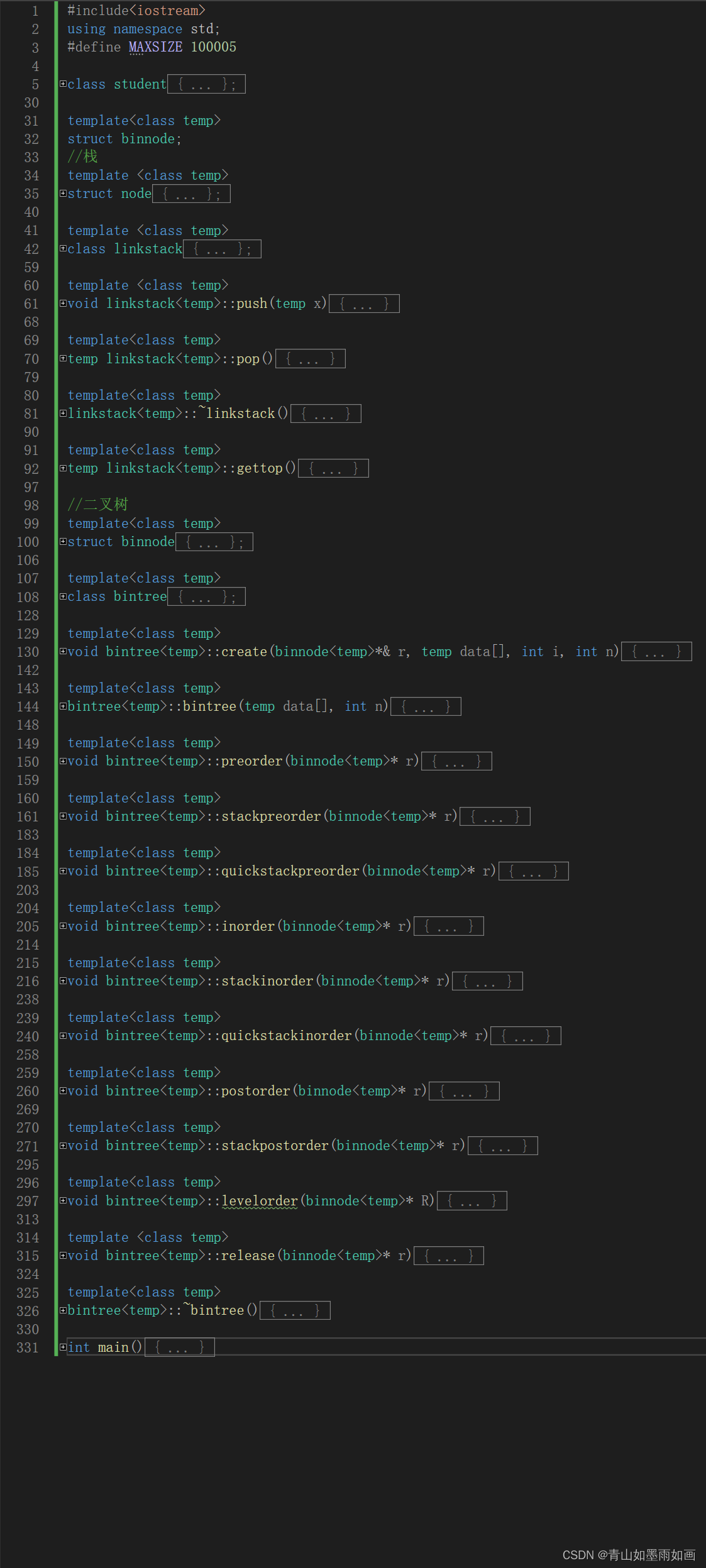
5.2.2运行结果:

6.STL实现栈完整代码
6.1代码部分
#include<iostream>
#include<stack>
using namespace std;
#define MAXSIZE 100005
class student
{
private:
int ID;
string name;
public:
int existence;
student()
{
this->ID = 0;
this->name = "unknown name";
this->existence = 0;
}
student(int ID, string name)
{
this->ID = ID;
this->name = name;
this->existence = 1;
}
friend ostream& operator<<(ostream& output, student& s)
{
output << s.ID << " " << s.name << endl;
return output;
}
};
//二叉树
template<class temp>
struct binnode
{
temp data;
binnode<temp>* leftchild;
binnode<temp>* rightchild;
};
template<class temp>
class bintree
{
private:
void create(binnode<temp>*& r, temp data[], int i, int n);
void release(binnode<temp>* r);
public:
binnode<temp>* root;
bintree(temp data[], int n);
void preorder(binnode<temp>* r);
void quickSTLpreorder(binnode<temp>* r);
void inorder(binnode<temp>* r);
void quickSTLinorder(binnode<temp>* r);
void postorder(binnode<temp>* r);
void levelorder(binnode<temp>* r);
~bintree();
};
template<class temp>
void bintree<temp>::create(binnode<temp>*& r, temp data[], int i, int n)
{
if (i <= n && data[i - 1].existence != 0)
{
r = new binnode<temp>;
r->data = data[i - 1];
r->leftchild = r->rightchild = NULL;
create(r->leftchild, data, 2 * i, n);
/*书上代码错误1:向函数传入实参时少传入一个n*/
create(r->rightchild, data, 2 * i + 1, n);/*书上代码错误同上*/
}
}
template<class temp>
bintree<temp>::bintree(temp data[], int n)
{
create(this->root, data, 1, n);
}
template<class temp>
void bintree<temp>::preorder(binnode<temp>* r)
{
if (r != NULL)
{
cout << r->data;
preorder(r->leftchild);
preorder(r->rightchild);
}
}
template<class temp>
void bintree<temp>::quickSTLpreorder(binnode<temp>* r)
{
stack<binnode<temp>*>s;
while (!s.empty() || (r != NULL))
{
if (r != NULL)
{
cout << r->data;
s.push(r);
r = r->leftchild;
}
else
{
r = s.top();
s.pop();
r = r->rightchild;
}
}
}
template<class temp>
void bintree<temp>::inorder(binnode<temp>* r)
{
if (r != NULL)
{
inorder(r->leftchild);
cout << r->data;
inorder(r->rightchild);
}
}
template<class temp>
void bintree<temp>::quickSTLinorder(binnode<temp>* r)
{
stack<binnode<temp>*>s;
while (!s.empty() || (r != NULL))
{
if (r != NULL)
{
s.push(r);
r = r->leftchild;
}
else
{
r = s.top();
s.pop();
cout << r->data;
r = r->rightchild;
}
}
}
template<class temp>
void bintree<temp>::postorder(binnode<temp>* r)
{
if (r != NULL)
{
postorder(r->leftchild);
postorder(r->rightchild);
cout << r->data;
}
}
template<class temp>
void bintree<temp>::levelorder(binnode<temp>* R)
{
binnode<temp>* queue[MAXSIZE];
int f = 0, r = 0;
if (R != NULL)
queue[++r] = R;//根节点入队
while (f != r)
{
binnode<temp>* p = queue[++f];//队头元素入队
cout << p->data;//出队打印
if (p->leftchild != NULL)
queue[++r] = p->leftchild;//左孩子入队
if (p->rightchild != NULL)
queue[++r] = p->rightchild;//右孩子入队
}
}
template <class temp>
void bintree<temp>::release(binnode<temp>* r)
{
if (r != NULL)
{
release(r->leftchild);
release(r->rightchild);
delete r;
}
}
template<class temp>
bintree<temp>::~bintree()
{
release(this->root);
}
int main()
{
system("color 0A");
student stu[5] = { {1,"zhang"},{2,"wang"},{3,"li"},{4,"zhao"},{5,"liu"} };
bintree<student>bintreee(stu, 5);
cout << "前序遍历:" << endl;
bintreee.preorder(bintreee.root);
cout << endl << "STL前序遍历:" << endl;
bintreee.quickSTLpreorder(bintreee.root);
cout << endl << "中序遍历:" << endl;
bintreee.inorder(bintreee.root);
cout << endl << "STL中序遍历" << endl;
bintreee.quickSTLinorder(bintreee.root);
cout << endl << "后序遍历:" << endl;
bintreee.postorder(bintreee.root);
cout << endl << "层序遍历:" << endl;
bintreee.levelorder(bintreee.root);
cout << endl;
return 0;
}6.2运行结果:

